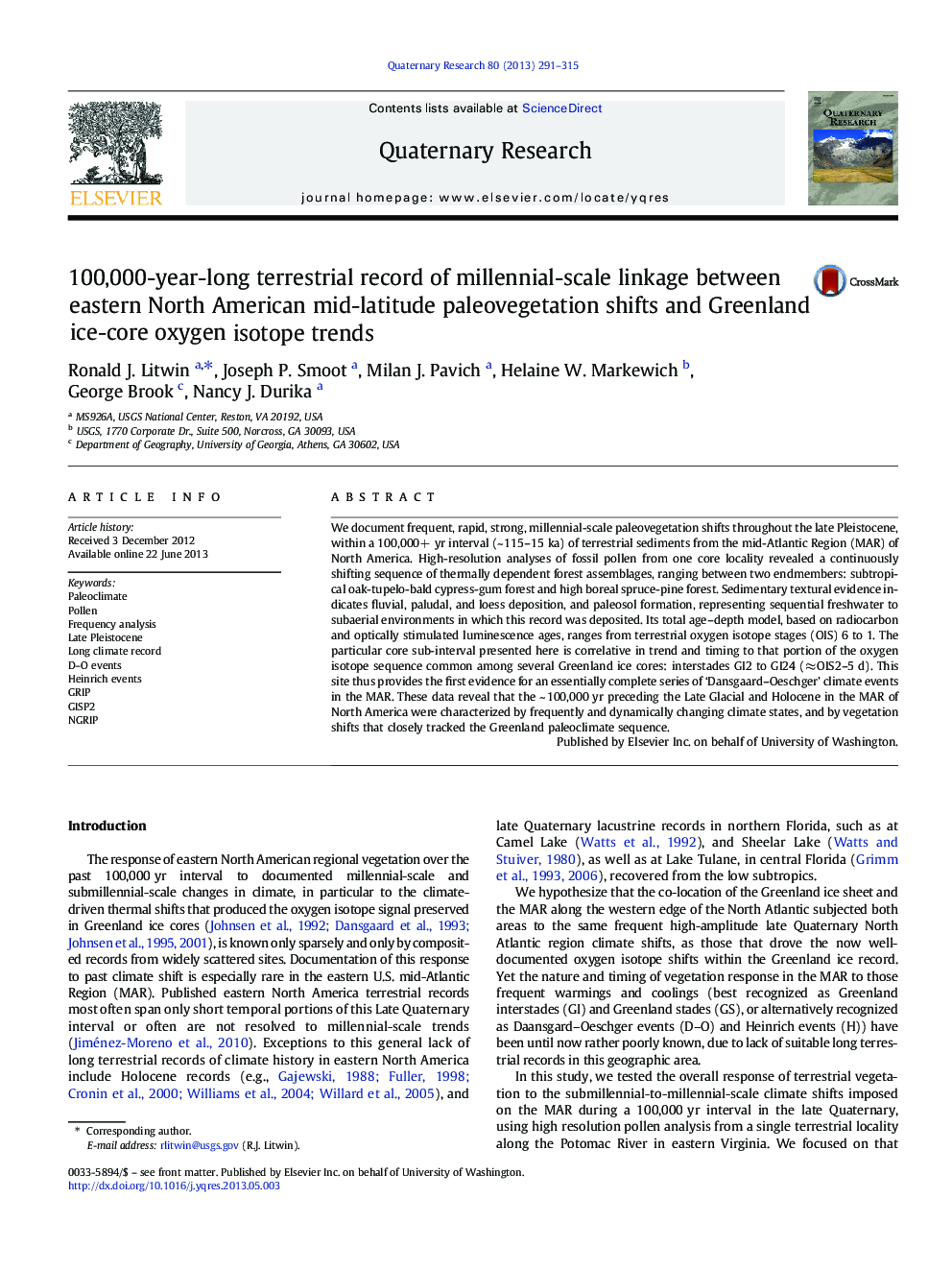| Article ID | Journal | Published Year | Pages | File Type |
|---|---|---|---|---|
| 1045372 | Quaternary Research | 2013 | 25 Pages |
We document frequent, rapid, strong, millennial-scale paleovegetation shifts throughout the late Pleistocene, within a 100,000+ yr interval (~ 115–15 ka) of terrestrial sediments from the mid-Atlantic Region (MAR) of North America. High-resolution analyses of fossil pollen from one core locality revealed a continuously shifting sequence of thermally dependent forest assemblages, ranging between two endmembers: subtropical oak-tupelo-bald cypress-gum forest and high boreal spruce-pine forest. Sedimentary textural evidence indicates fluvial, paludal, and loess deposition, and paleosol formation, representing sequential freshwater to subaerial environments in which this record was deposited. Its total age–depth model, based on radiocarbon and optically stimulated luminescence ages, ranges from terrestrial oxygen isotope stages (OIS) 6 to 1. The particular core sub-interval presented here is correlative in trend and timing to that portion of the oxygen isotope sequence common among several Greenland ice cores: interstades GI2 to GI24 (≈ OIS2–5 d). This site thus provides the first evidence for an essentially complete series of ‘Dansgaard–Oeschger’ climate events in the MAR. These data reveal that the ~ 100,000 yr preceding the Late Glacial and Holocene in the MAR of North America were characterized by frequently and dynamically changing climate states, and by vegetation shifts that closely tracked the Greenland paleoclimate sequence.
